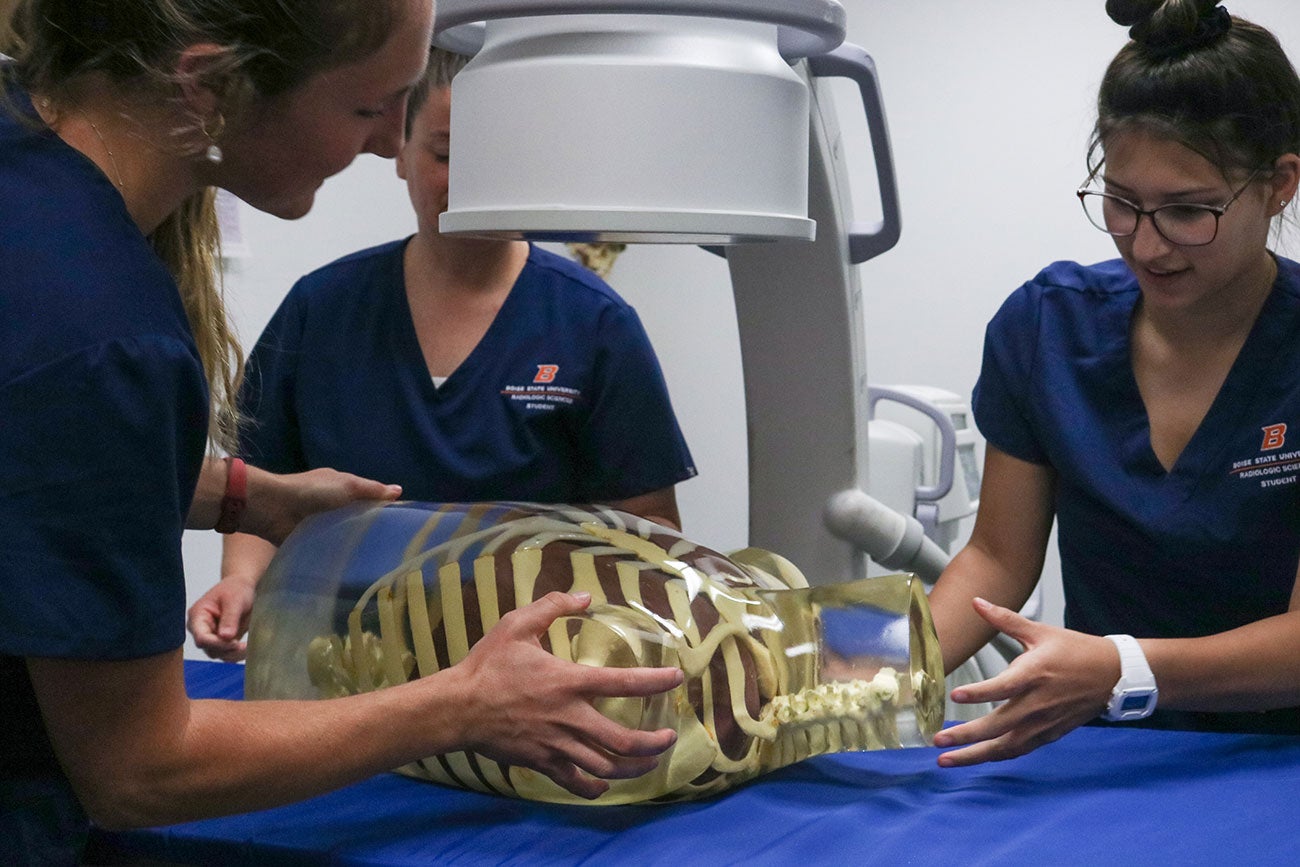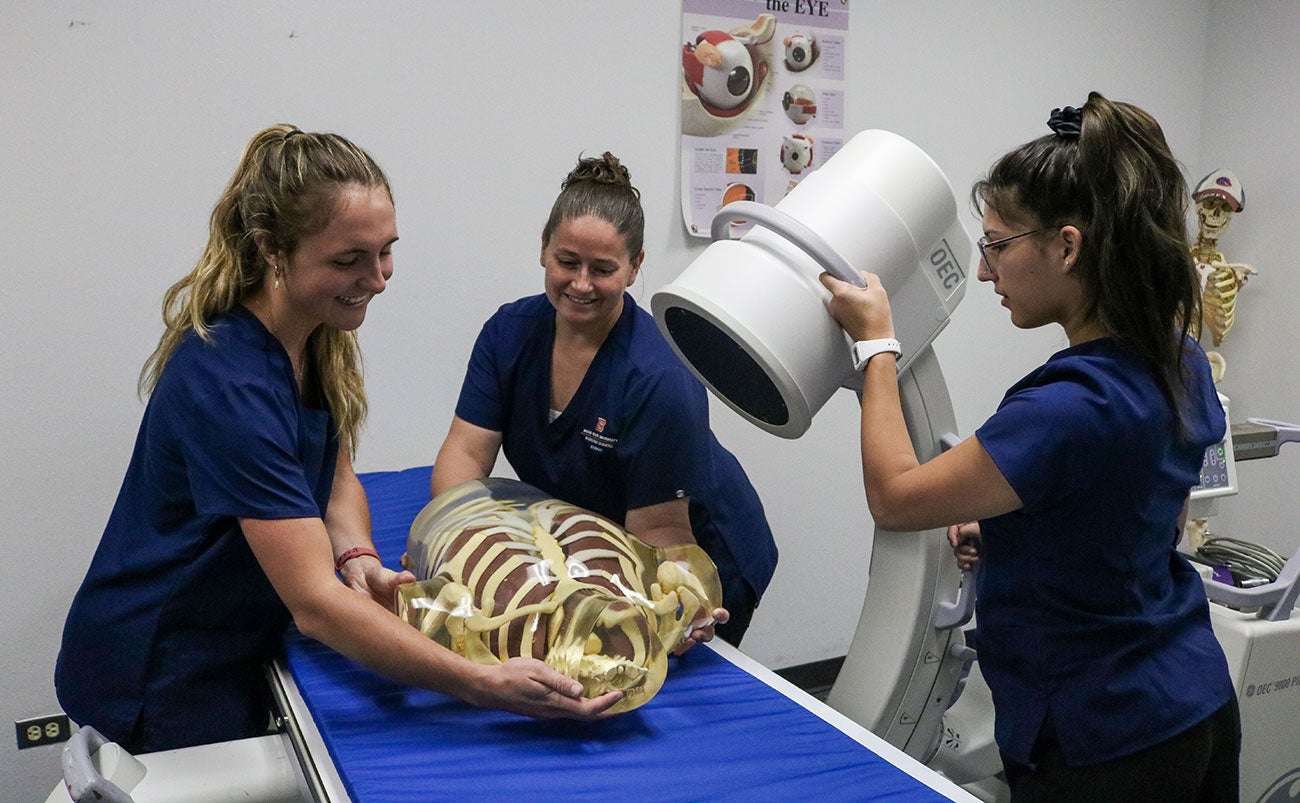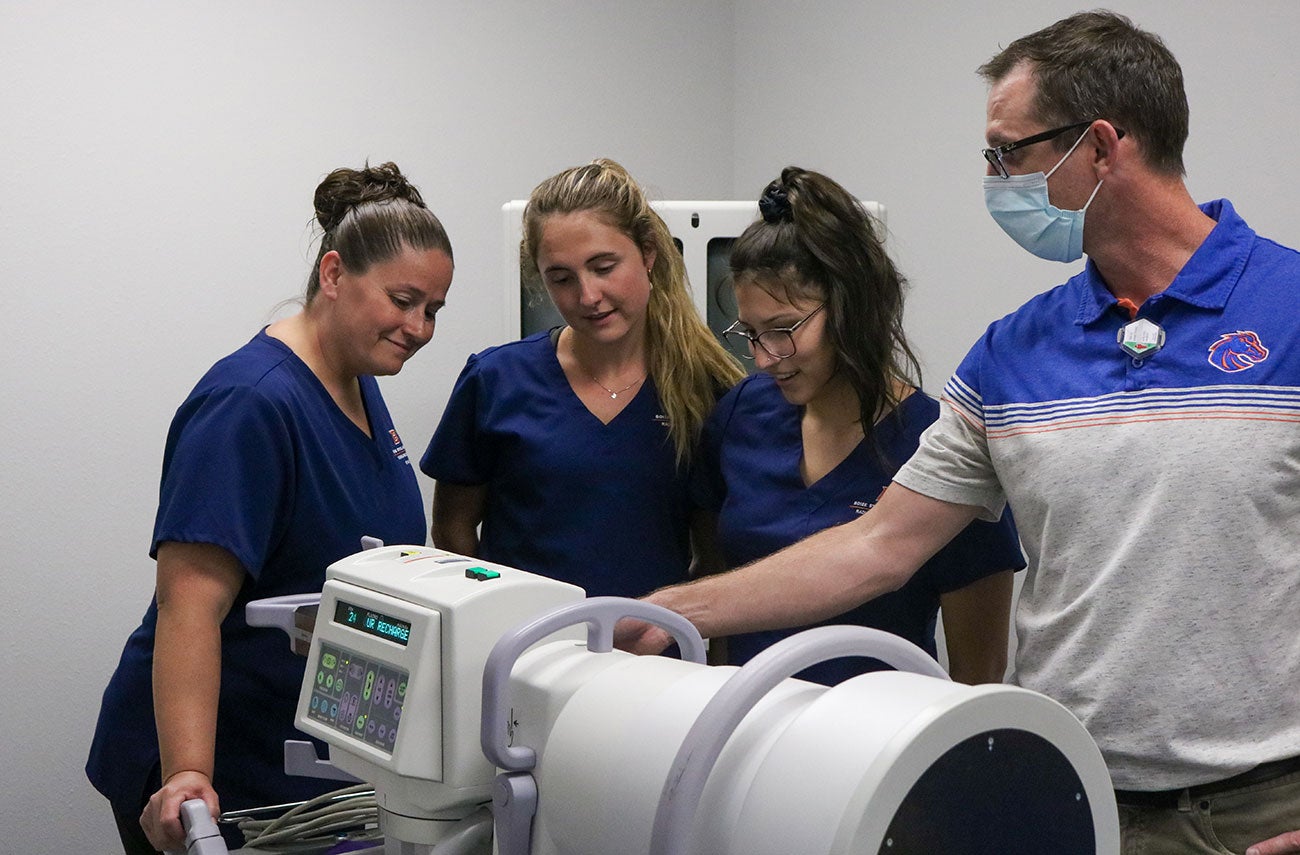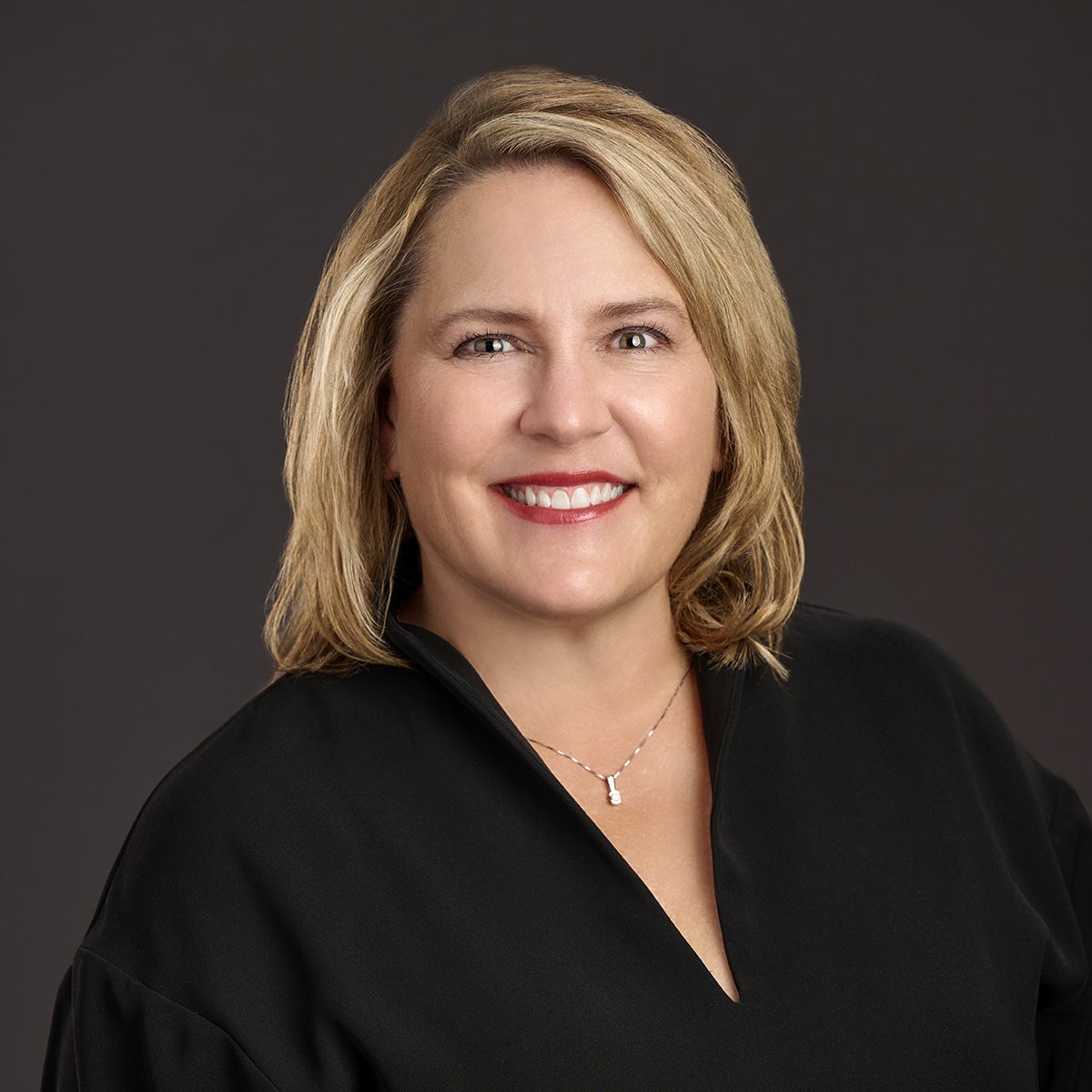
Take it from Boise State and College of Health Sciences alum Brian Waltman: Health care students are well-served – as are future patients and colleagues – when they can practice with the machinery and software they’ll use when they graduate and begin work in clinical settings.
The college is grateful to Waltman, Boise State class of 2007 and manager of medical imaging at Saint Alphonsus Medical Center in Nampa, and his employer for the recent donation of a “C-Arm,” the piece of equipment with the telltale “C” curve in its design that allows radiologic technologists to deliver accurate and timely images – X-rays.
“It was just a situation where the stars aligned and it all came together nicely,” he said of the very large, very helpful gift. “We discovered a need, I just put two and two together and here we are.”
Mobile C-Arm units are used in surgery and sometimes in hospitals’ intensive and critical care units. They – and the technologists who operate them – are particularly vital to surgeons’ successful work in operating rooms.
“It’s always a fight with the clock, because the patient is under anesthesia,” said Leslie Kendrick, who chairs the Department of Radiologic Sciences within the College of Health Sciences’ School of Allied Health Sciences and serves as program director of the bachelor of science in imaging sciences.

Kendrick’s students will be among the beneficiaries of the donation. Whether they are students and credentialed in their field, radiologic technologists manipulate the equipment prior to and during surgery. This entails quickly and efficiently moving and adjusting the C-Arm and monitors; locking the equipment into place while the ionizing radiation, needed to produce images that keep surgeries proceeding according to plan, is being emitted.
“It provides students the needed practice for what they will be doing in the clinical setting,” she said.
Working in small groups, to promote radiation safety by minimizing exposure to the ionizing radiation emitted by such equipment, students in the principles of radiographic imaging, radiobiology and protection, radiographic quality assurance and fluoroscopic examinations and contrast media courses will practice with the equipment in the college’s lab environment. This equipment affords students becoming familiar with the device’s locks, pedals, movements and settings to effectively operate around patients of all body types and sizes. The students will also use the equipment for research projects.
Equipment donations keep students current
Donations such as this one from Saint Alphonsus are critical to keep students current with the state of medical technology.

Kendrick said the college purchased its first C-Arm in about 2008 through generous donations. Saint Alphonsus Nampa then offered a newer unit, in 2014, which replaced that first unit.
“Saint Alphonsus again thought about us,” she said, noting that her students and classes, along with hundreds of other programs, faculty members and students at any given point, are reaping the benefit of the partnerships between Saint Alphonsus, as well as other local hospitals and health care systems. The department has also been the recipient of ultrasound machines and transducers, image viewing software, a computed radiography unit, funds to support the purchase of an upgraded generator, reduced costs for CT and MRI simulation software and much more.
Industry leaders and representatives are involved with the college and department’s advisory boards. These community partners are also invited to participate in the department’s student acceptance processes, offer feedback on student preparedness, give employment outlooks that drive program acceptance numbers, and provide direction on new programming.
“Without our clinical affiliates, our program would not exist,” Kendrick said. “They are part of the success of the program. We work hard to foster a strong, collaborative relationship with them.”
“We really do rely on them as partners,” she said. “They help us provide the most effective lab experiences for our students, so that when a student graduates from our programs, they are ready to participate at a high level as employees. The support is absolutely vital to the success of our programs and our students.”
And while patients- and students-to-be will benefit from this most recent donation, this new equipment means Boise State can also pay it forward in a way that will ripple out with similar effects. The C-Arm replaced by this latest donation will be shared with the College of Western Idaho’s Surgical Technology Program. This will be the second C-Arm the Department of Radiologic Sciences has passed on the CWI program. “We hope to continue this cycle,” said Kendrick. “It is great to know the donations can benefit more than one group of students; improving student preparedness for clinical practice.”
Waltman remembers the impact practice in the lab has on students.
“Having that hands-on experience before you have a patient in front of you is very valuable,” he said. “It takes a lot of the stress out of that first encounter with the patient.”
Support the College of Health Sciences.
Inspired by this story? Let's chat!
-

Heather Jauregui
Senior Director of Development
-
